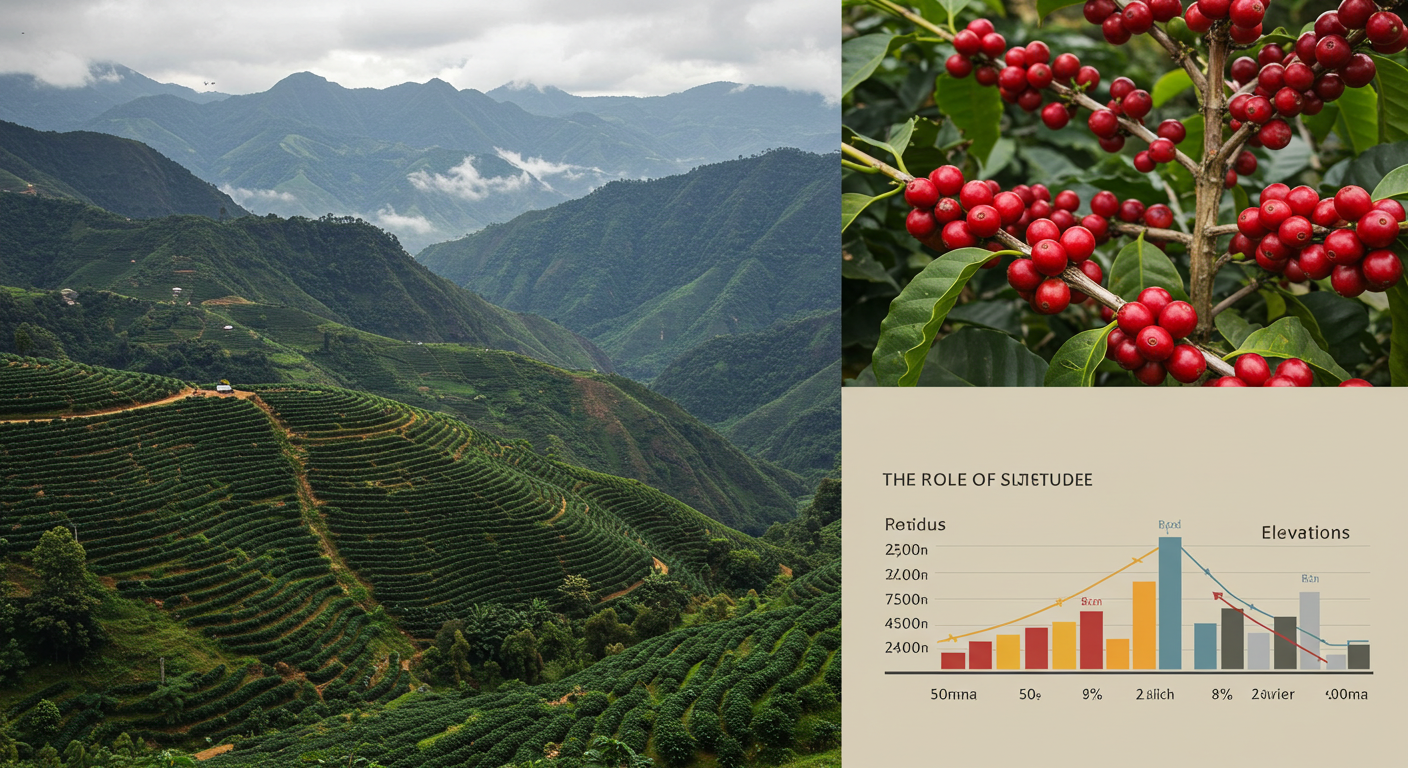If you’ve ever seen a bag of specialty coffee labeled with “grown at 1,800 meters” or “shade-grown at high elevation,” you might’ve wondered: what does altitude have to do with coffee flavor?
It turns out, quite a lot.
Altitude plays a critical role in how coffee tastes, and understanding it can help you choose beans that match your flavor preferences. Let’s dive into how elevation shapes the characteristics of your favorite cup.
Why Altitude Matters
Coffee is an agricultural product, and just like wine grapes or chocolate, its flavor is heavily influenced by where and how it’s grown.
Higher altitudes tend to create better conditions for coffee plants to develop more complex flavors. The reason? Slower growth.
At high elevations:
- The air is cooler
- Plants grow more slowly
- Beans develop more sugars
- Acidity becomes more pronounced
- Flavors become brighter and more nuanced
High-Altitude vs. Low-Altitude Coffee
Let’s break down the typical flavor profiles based on altitude ranges.
High Altitude (Above 1,200 meters / 4,000 feet)
- Grown in cooler climates
- Slower ripening = more time for complex sugars and acids to develop
- Beans are denser and more flavorful
- Common flavors: floral, fruity, citrusy, wine-like, bright acidity
Examples:
- Ethiopia (1,800–2,200 m)
- Colombia (1,500–2,000 m)
- Kenya (1,400–2,000 m)
Medium Altitude (900–1,200 meters / 3,000–4,000 feet)
- Balanced growth speed and flavor complexity
- Less acidity than high-altitude coffee, but still some depth
- Common flavors: chocolate, nutty, mild fruit, medium body
Examples:
- Brazil (800–1,200 m)
- Guatemala (900–1,500 m)
Low Altitude (Below 900 meters / 3,000 feet)
- Warmer climate = faster growth
- Beans mature quickly with less complexity
- Softer structure, lower density
- Common flavors: earthy, simple, less acidic, heavier body
Examples:
- Robusta beans from Vietnam and Uganda
- Some commodity-grade Arabica
Why Density Matters
Altitude also affects bean density. Higher-altitude beans are denser, which means:
- Better roasting potential
- Richer aroma and taste
- More suitable for light to medium roasts (to highlight complexity)
Less dense beans (low elevation) are often roasted darker to mask simpler or harsher flavors.
Altitude Labels You Might See
Coffee bags from specialty roasters often include altitude to give you a clue about what to expect. Look for terms like:
- “SHB” or “Strictly High Grown” (used in Central America, typically above 1,200 m)
- Exact elevation (e.g., 1,750 meters above sea level)
- “High-grown Arabica” (better quality)
These labels are useful indicators of potential flavor — especially if you know what you like.
How to Choose Based on Altitude
Here’s a quick guide based on taste preference:
| If you like… | Look for coffee from… |
|---|---|
| Bright, fruity, tea-like flavors | Ethiopia, Kenya, Rwanda (1,500+ m) |
| Balanced with chocolate and mild fruit | Colombia, Guatemala, Peru (1,200–1,600 m) |
| Full-bodied, earthy, lower acidity | Brazil, Indonesia, Vietnam (below 1,200 m) |
Can You Taste the Difference?
Absolutely. While roast level and processing method also matter, altitude adds a distinctive dimension of clarity and complexity. A high-grown Ethiopian washed coffee may taste bright and citrusy, while a low-altitude Brazilian natural may taste smooth, nutty, and chocolatey.
Once you start tasting coffees with altitude in mind, it becomes easier to explore and enjoy the wide variety of flavors coffee can offer.
Final Brew Thought
Altitude is more than just a number on a coffee bag — it’s a key factor in what makes specialty coffee truly special.
So next time you’re picking out beans, take a second to check the elevation. It might help you discover your next favorite cup.


